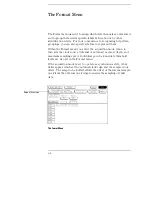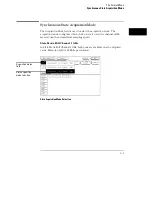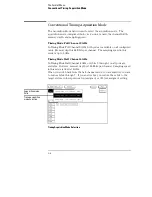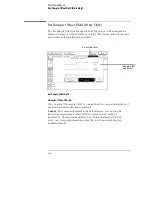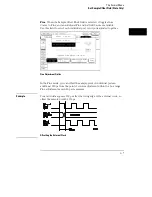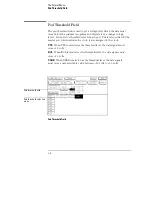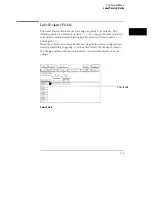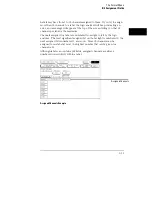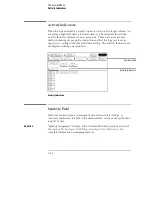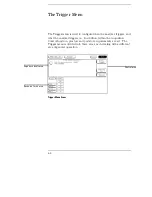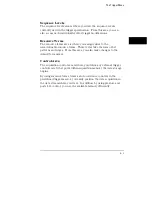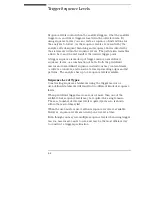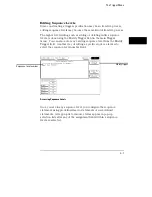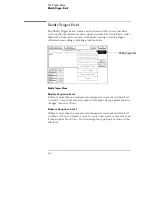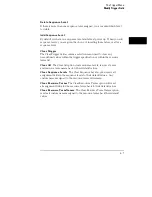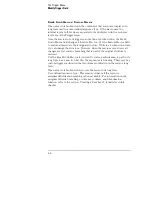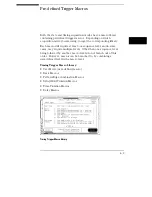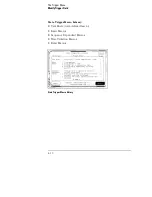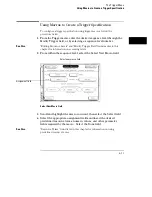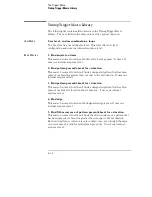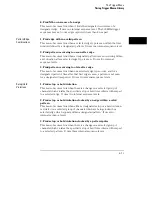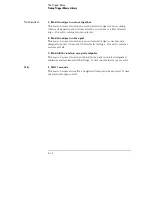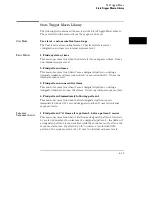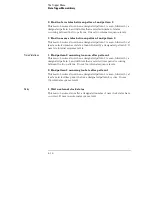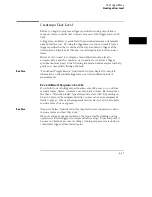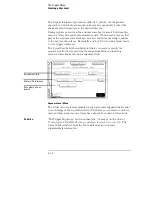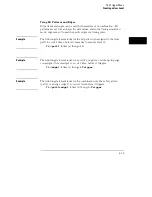
Trigger Sequence Levels
Sequence levels control when the analyzer triggers, what the analyzer
triggers on, and where trigger is located in the collected data. By
using sequence levels, you can create a sequence of instructions for
the analyzer to follow. As the sequence levels are executed by the
analyzer, all subsequent branching and sequence flow is directed by
the statements within the sequence levels. The path taken resembles
a flow chart, and the end result is the desired trigger point.
A trigger sequence is made up of trigger macros, user-defined
sequence levels, or a combination of both. Both the predefined
macros and user-defined sequence instructions may contain timers,
occurrence counters, and resource terms representing edges and bit
patterns. The analyzer has up to 4 sequence levels available.
Sequence Level Types
Constructing sequence statements using the trigger macros or
user-defined statements will result in two different kinds of sequence
levels.
When predefined trigger macros are used, more than one of the
available four sequence levels may be required for a single macro.
The exact number of internal levels required per macro is shown
within the macro library list.
When the user-mode is used, all four sequence levels are available.
However, sequence levels are used up one level at a time.
Even though you may use multiple sequence levels when using trigger
macros, macros are easier to use, and may be the most efficient way
to construct a trigger specification.
4–4
Summary of Contents for 16517A
Page 3: ...The Agilent Technologies 16517A 4 GSa S Timing and 1 GSa S State Logic Analyzer ii ...
Page 5: ...iv ...
Page 11: ...Contents 6 ...
Page 12: ...1 General Information ...
Page 18: ...2 Probing ...
Page 29: ...2 12 ...
Page 30: ...3 The Format Menu ...
Page 42: ...4 The Trigger Menu ...
Page 79: ...4 38 ...
Page 80: ...5 The Listing Menu ...
Page 86: ...6 The Waveform Menu ...
Page 106: ...7 The Compare Menu ...
Page 122: ...8 The Chart Menu ...
Page 133: ...8 12 ...
Page 134: ...9 Markers and Stop Measurements ...
Page 149: ...9 16 ...
Page 150: ...10 Skew Adjust ...
Page 156: ...11 Error Messages ...
Page 165: ...11 10 ...
Page 166: ...12 Specifications and Characteristics ...
Page 176: ...13 Installation and Service ...
Page 189: ...13 14 ...
Page 193: ...Index 4 ...

